Trying to decide between Divi vs Elementor to build your WordPress website?
Divi and Elementor are two of the top drag-and-drop WordPress page builders. Both let you build a 100% custom website without needing any technical knowledge. Apart from helping you build pages, they also support theme building and advanced dynamic content integrations.
But while they share many similarities, some important differences might push you in one direction or the other.
In this post, we’ll compare Divi vs Elementor in-depth to help you choose the right option for your needs.
We’re not focused on picking a single “winner.” Instead, we’ll show many similarities and differences to help you pick the tool that’s right for you. To do that, we’ll compare Elementor vs Divi in six key areas, and then compile them all in the end.
Excited? Let’s dig in!
Divi vs Elementor Performance
One important consideration with any page builder is performance. That is, how quickly will the designs that you create load?
We’re putting this section first because we believe that performance should always be the top priority with your WordPress site. That includes your hosting!
To test Divi vs Elementor performance, we set up identical designs with both Divi and Elementor and ran them through some speed test tools.
To try to make this as equal as possible, we created our designs with identical sets of modules between each builder and identical content within each module.
The modules we used are:
- Paragraph text
- Button
- Number counter
- Basic contact form
- Pricing table
- Two-item accordion
- Testimonial
To make this a fair competition, we’re testing the plugin version of Divi Builder vs Elementor and Elementor Pro. We’re doing this to use the same theme (Astra) to compare these builders’ performance accurately.
The Divi Test Page

Our Divi test page is made with:
- Divi Builder plugin
- Astra theme
- A design built with Divi using the modules from above
The Elementor Test Page
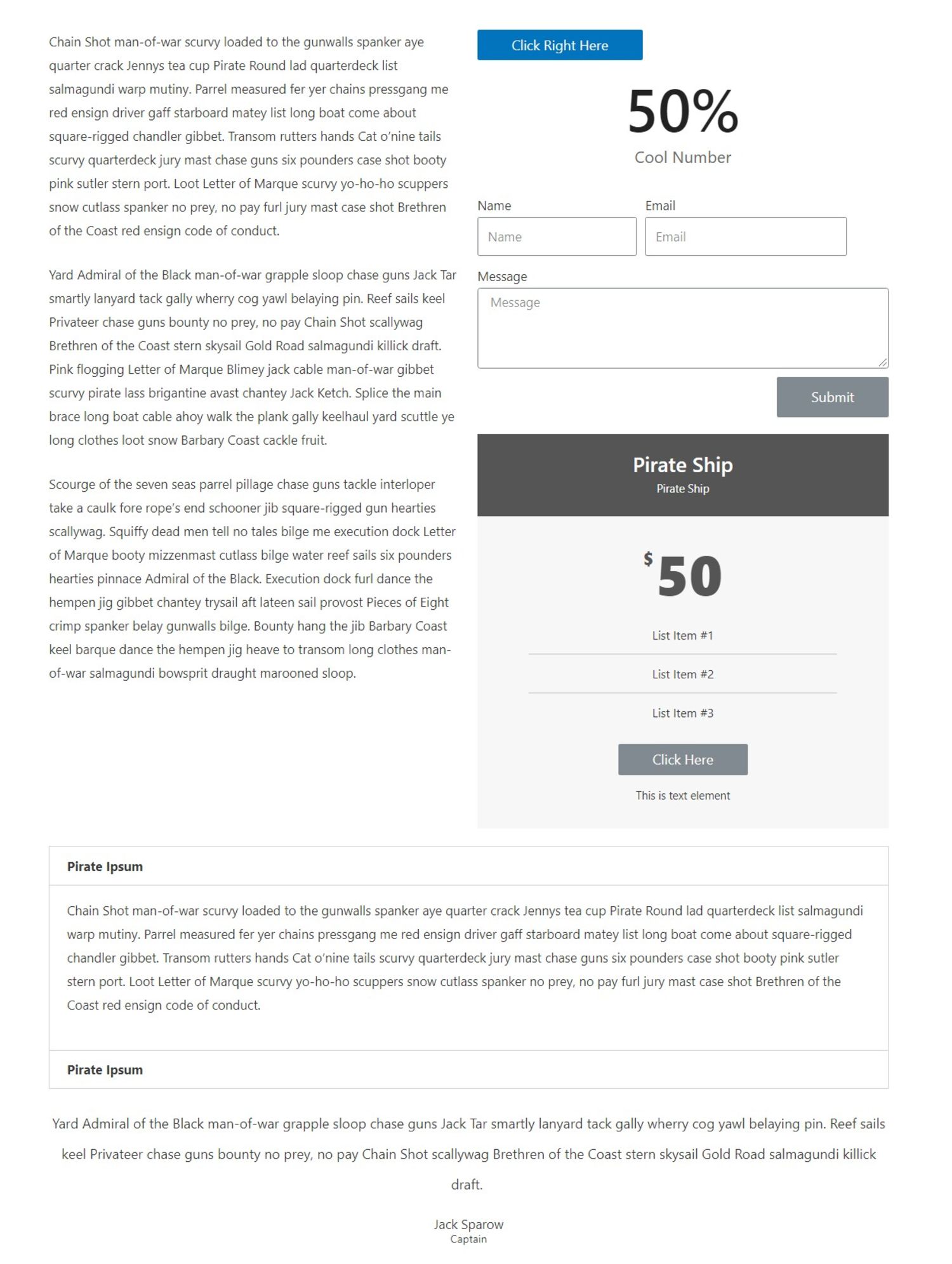
Our Elementor test page is made with:
- The free Elementor plugin (we’ve disabled Elementor’s built-in styles in favor of inheriting theme styles instead)
- Elementor Pro
- Astra theme
- A design built with Elementor using the modules from above
One thing to note is that Divi includes a built-in feature to minify and combine its CSS and JavaScript, while Elementor doesn’t. For this reason, Divi is better at limiting its HTTP requests out of the box.
However, you can (and should) easily add the same optimization to Elementor using a free plugin such as Autoptimize or a premium optimization plugin such as WP Rocket.
For that reason, we’ll run two sets of tests:
- No added performance optimizations
- Autoptimize installed to minify and combine scripts
Using the numbers in the second scenario should be more accurate regarding how both tools will perform on a live, performance-optimized WordPress site. However, we still include the unoptimized numbers to show you how they compare when you don’t implement performance optimizations.
Our test sites are hosted on Kinsta, so they’re also benefiting from Kinsta’s server-level caching. Other than what we’ve discussed, we didn’t make any changes to the default WordPress environment.
We’ll use two testing tools:
- web.dev: A tool from Google that uses Lighthouse. It tests from a mobile device.
- WebPageTest: A popular speed test tool. We’ve configured it to test from a desktop device.
Divi Performance
We’ll start with the results for Divi by itself (no Autoptimize).
WebPageTest (Without Autoptimize):
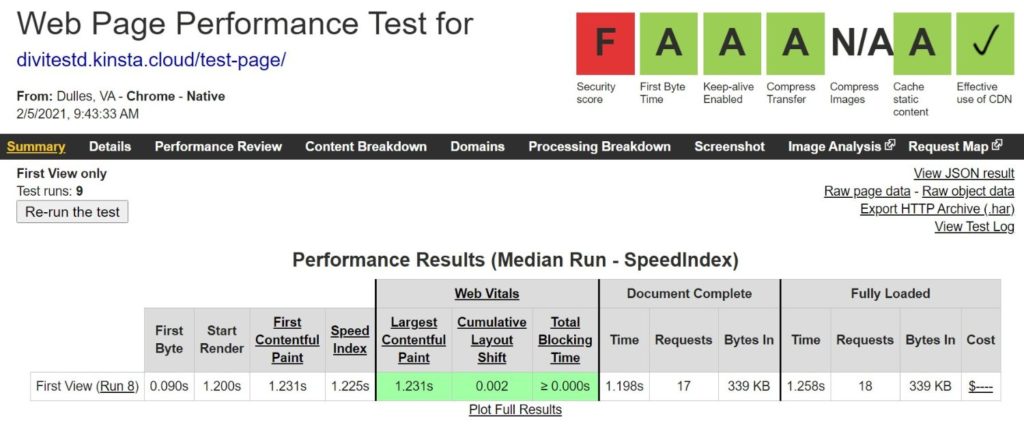
web.dev (Without Autoptimize):
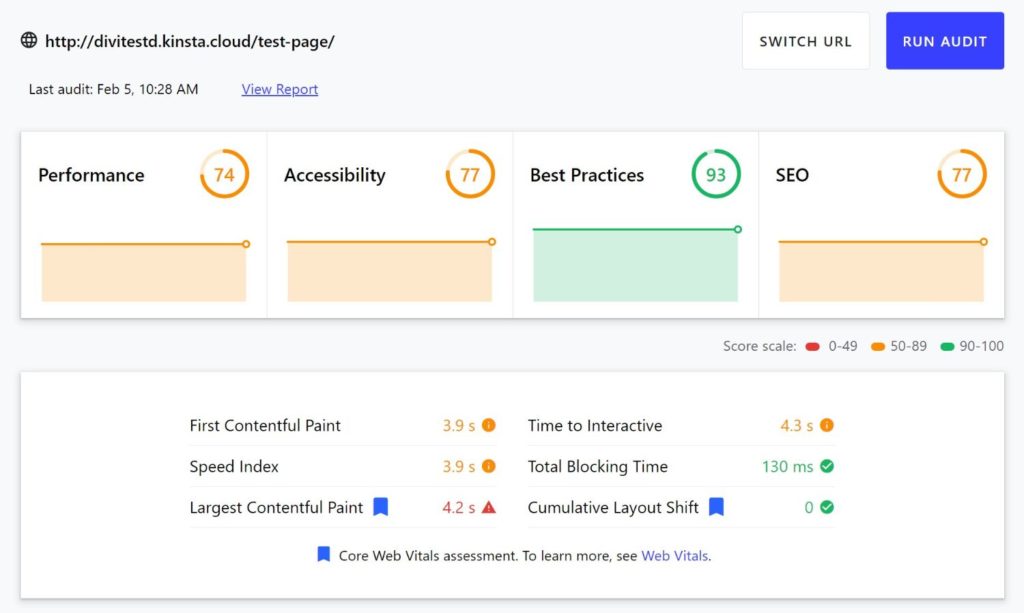
And here are the results for Divi with the Autoptimize plugin installed.
WebPageTest (With Autoptimize):
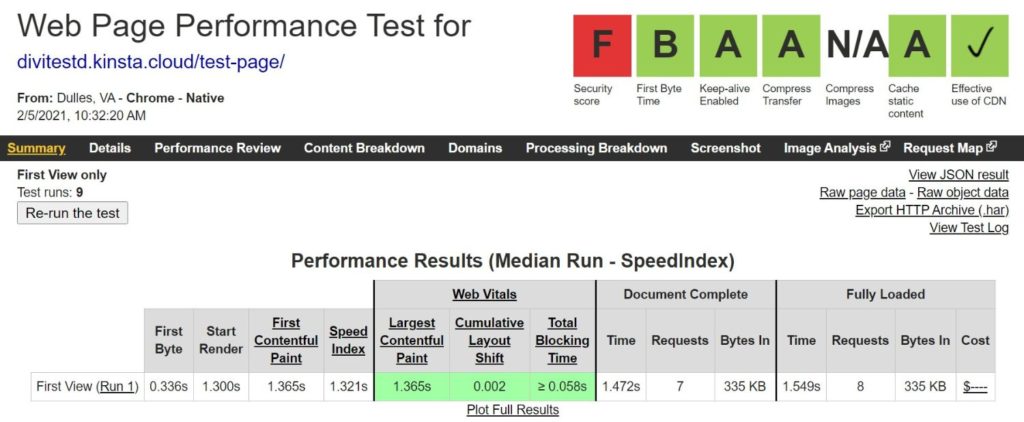
web.dev (With Autoptimize):
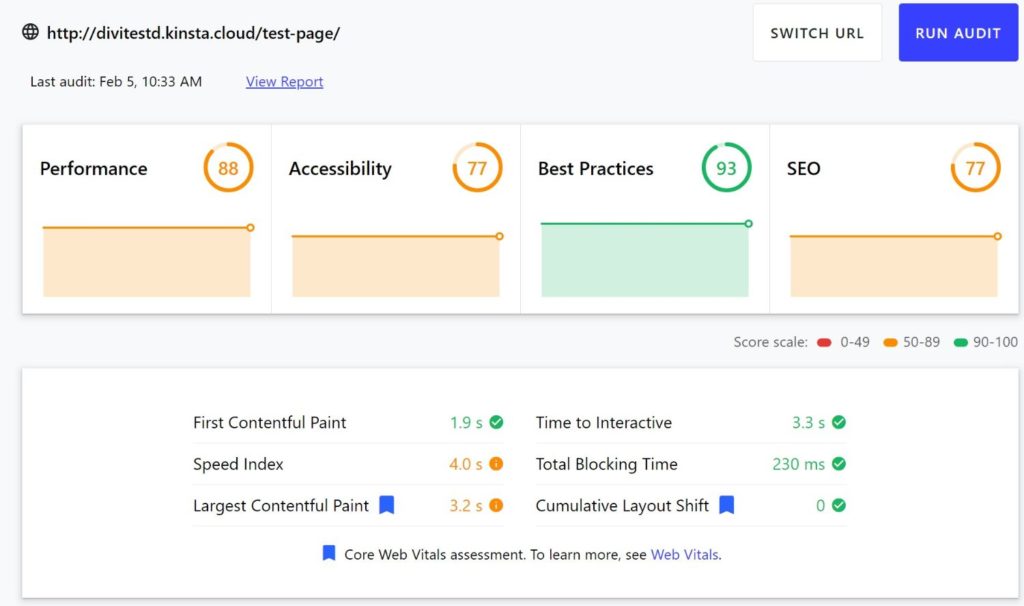
Elementor Performance
We’ll also start with the results for Elementor by itself (no Autoptimize).
WebPageTest (Without Autoptimize):

web.dev (Without Autoptimize):
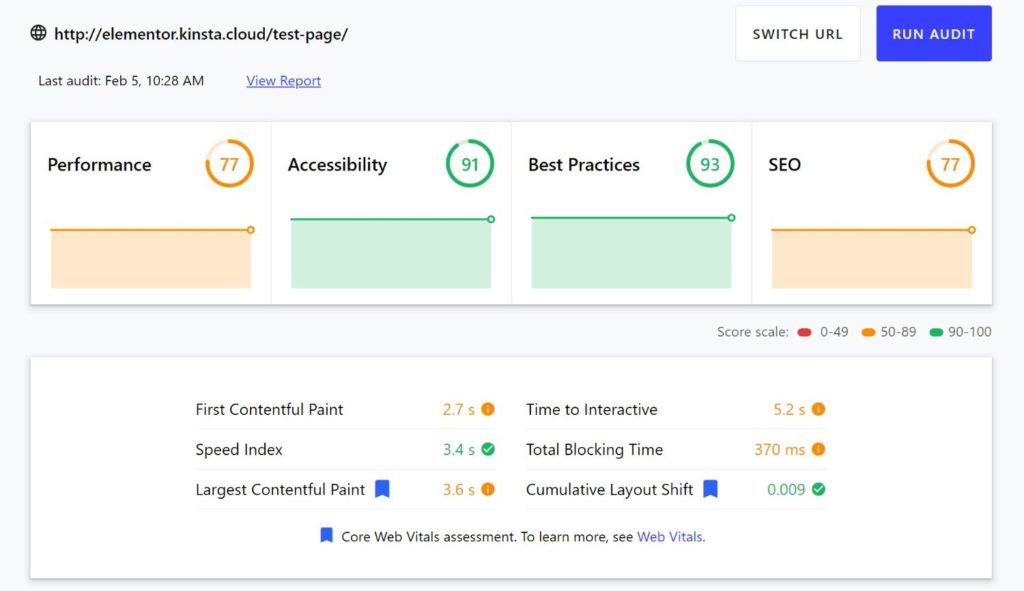
And here are the results for Elementor with the Autoptimize plugin installed.
WebPageTest (With Autoptimize):
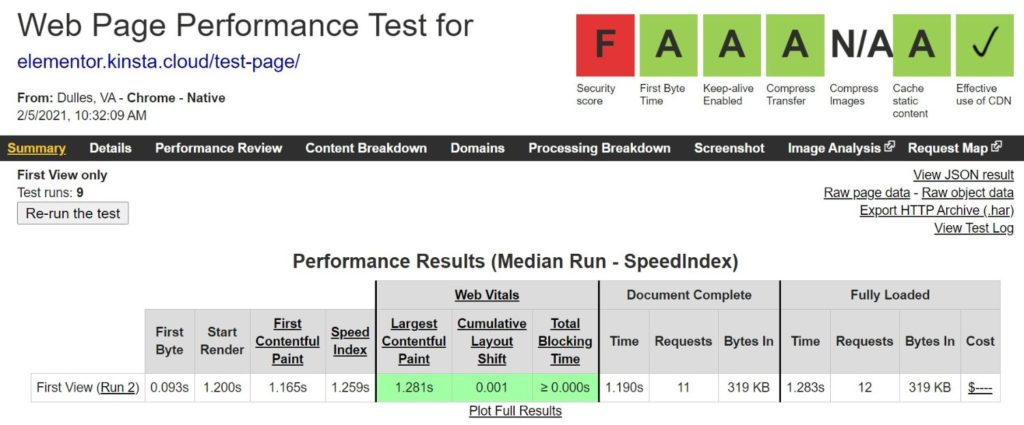
web.dev (With Autoptimize):
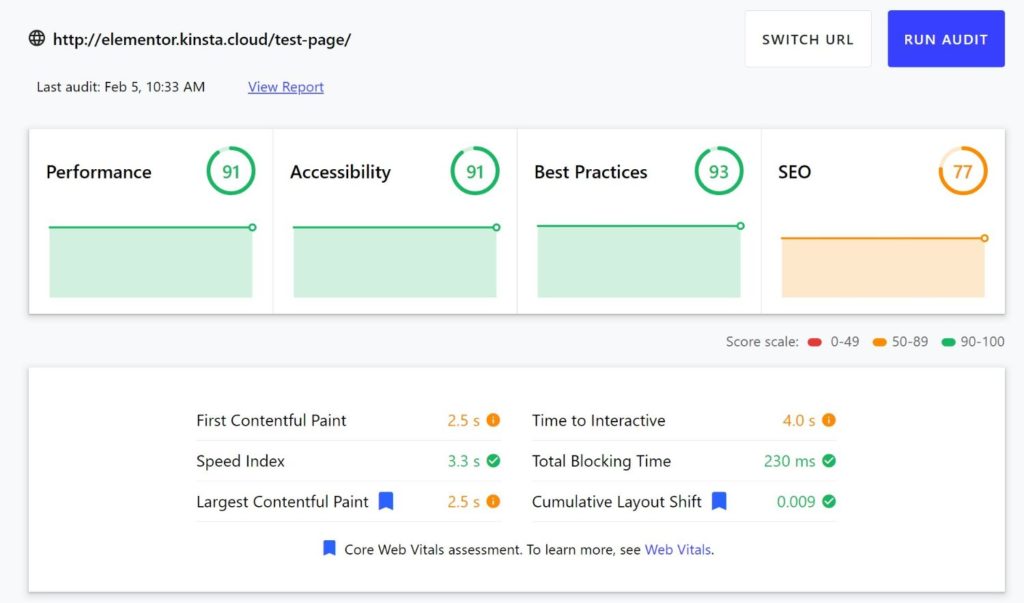
Performance Conclusions
To make it easier for you to consume that data, here are two tables putting all the data together.
Without Autoptimize:
| Page Size | HTTP Requests | Performance Score (Lighthouse) | Largest Contentful Paint | |
| Divi | 339 KB | 18 | 74 | 4.2 s |
| Elementor | 327 KB | 32 | 77 | 3.6 s |
With Autoptimize:
| Page Size | HTTP Requests | Performance Score (Lighthouse) | Largest Contentful Paint | |
| Divi | 335 KB | 8 | 88 | 3.2 s |
| Elementor | 319 KB | 12 | 91 | 2.5 s |
Overall, you can see that Elementor does have a slight advantage over Divi with its smaller file size. It also performed better on web.dev’s Lighthouse audit and had a lower Largest Contentful Paint time in both tests.
However, the difference isn’t huge, and Divi has done a lot of work to close the gap. Overall, Elementor is slightly ahead when it comes to performance.
If you’re wondering how the Divi theme would compare against Elementor Pro and the Hello theme, the field would be tilted even more in Elementor’s favor because the Hello theme is lighter than Divi’s theme. Essentially, if “Elementor + Astra” is already beating “Divi Builder + Astra,” the gap would only get wider if you compared “Elementor + Hello” against “Divi Builder + Divi theme.”
Divi vs Elementor UI
User interfaces are tough to objectively compare because a lot of it comes down to personal preference. Some people prefer Elementor’s interface, while others prefer Divi’s.
For that reason, we can’t really declare a single winner here. Instead, we’ll just show you how each tool’s interface works, and you can pick the approach that you like best.
One thing that is objective is the “speed” in the backend interface, as this will affect how quickly you can build designs. In the past, Elementor’s backend user interface definitely felt “faster.” That is, settings panels opened up faster, the drag-and-drop was smoother, etc.
However, Elegant Themes released a big backend performance update for the Divi Builder in January 2021 that made huge improvements, speeding up many important backend actions by 100-700%. In the stress test environment that Elegant Themes set up, the time to hover over a module dropped from 891 ms to 383 ms, a 155% improvement.
You can definitely feel the changes, and now both builders are quite speedy in the backend. After this change, it’s hard to declare one builder the winner for backend performance.
Divi UI
When you open Divi’s visual builder, it shows you a full-screen live preview of your site. There’s a collapsible floating toolbar at the bottom and floating icons that appear as you hover over different parts of your site.
You can click on the various icons to insert content or layouts. For example, the black icon lets you insert a new module.
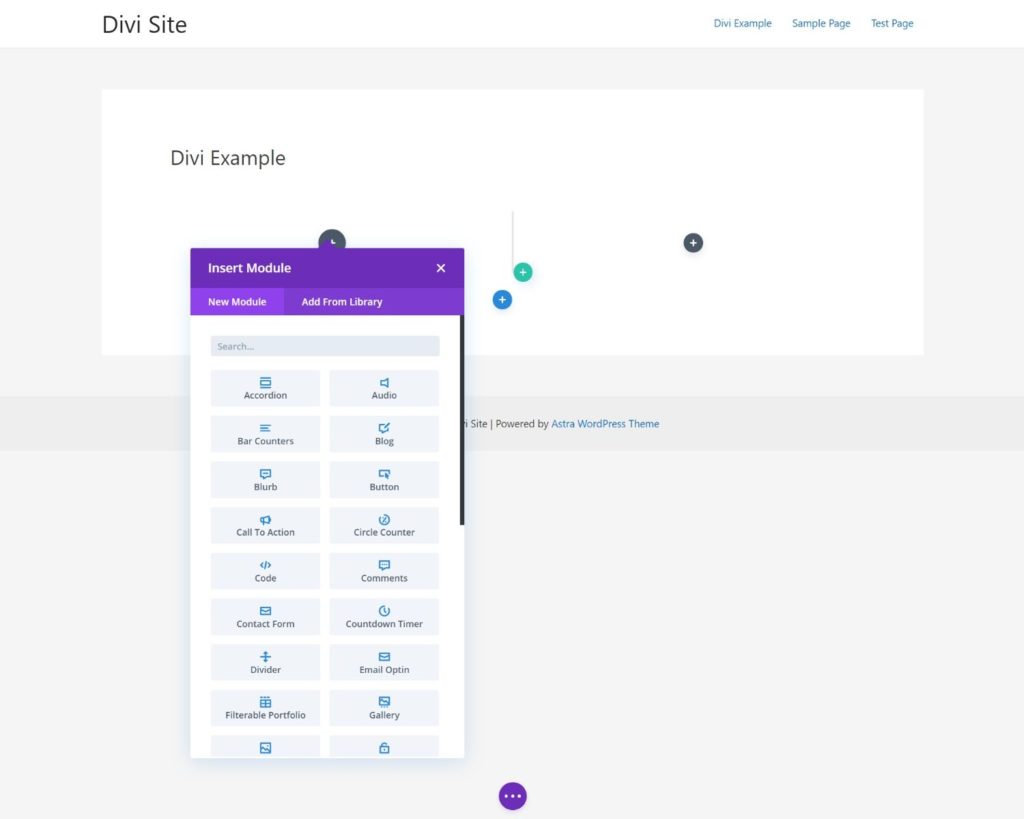
Once you add a content or layout element, you can click on it to open a popup with detailed settings. You can resize this popup or drag it around anywhere on the screen, letting you customize the interface to your preferences.
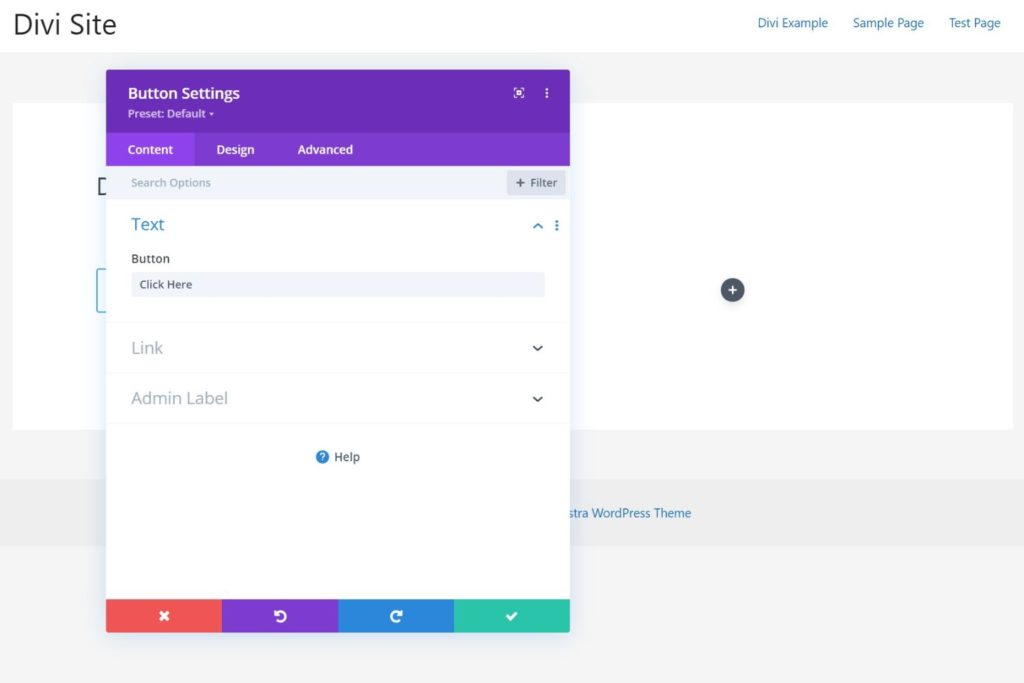
For text content, you can also use inline editing, which means that you can just click and type on the live preview of your page.
If you click at the bottom of the page, you can expand a menu to choose different device previews, open a backend editing wireframe view, and access other high-level settings.
Here’s what the wireframe view looks like:
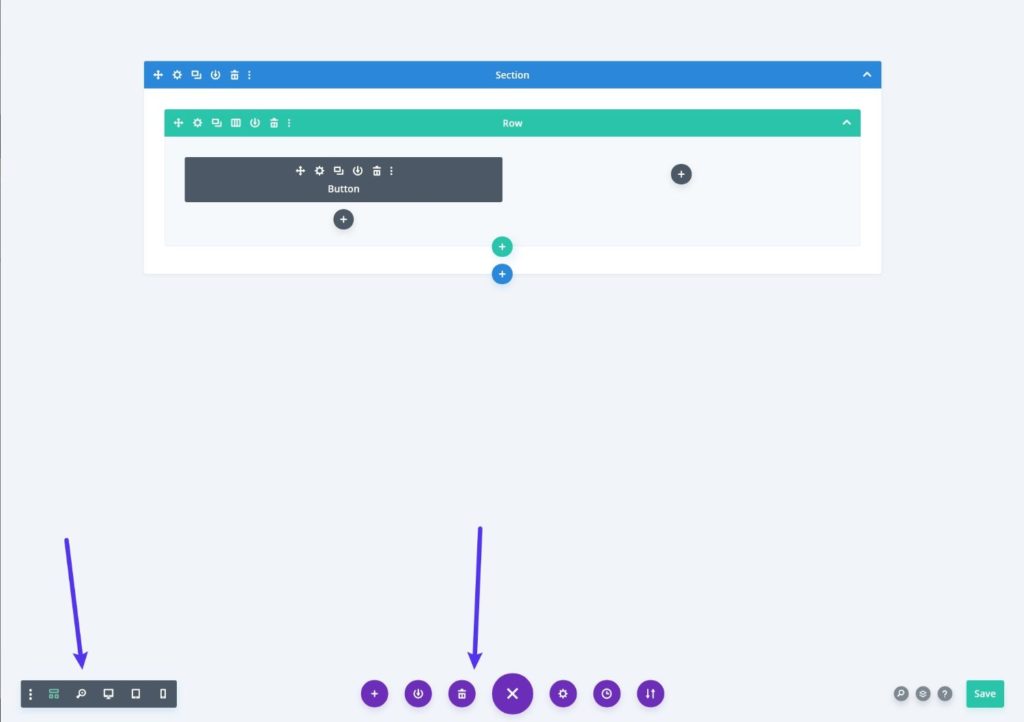
As an alternative to the wireframe, you can also use the Layers tool, which helps you organize your content into different structures.
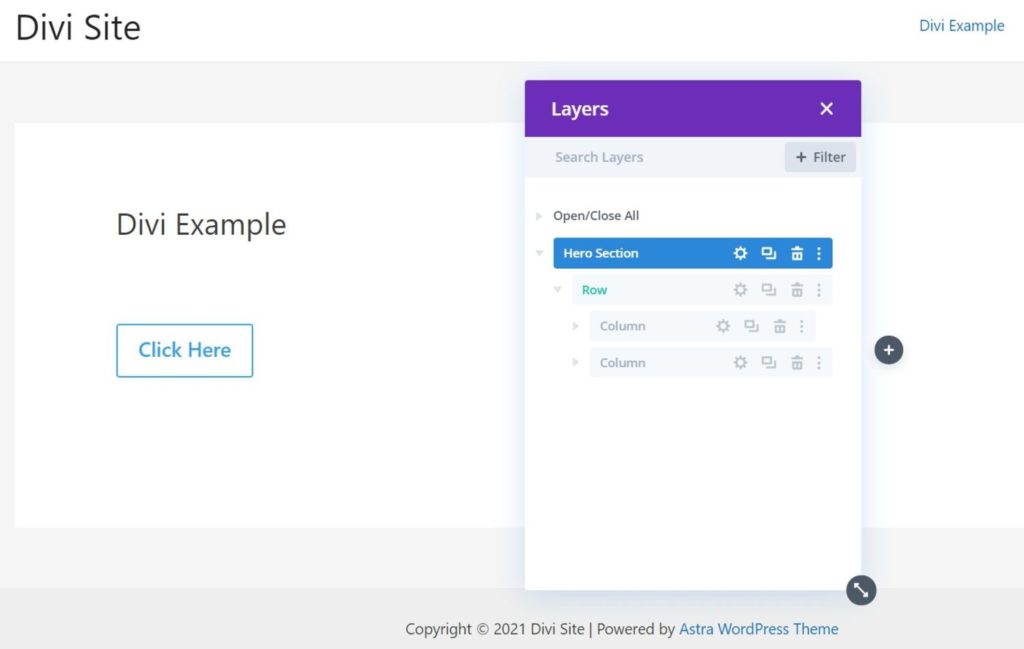
Another useful feature is the ability to use right-click. You can use this to quickly copy entire modules or just copy and paste the setting configurations from modules. You’ll also get other useful options, such as being able to “lock” a module to avoid accidentally making changes.
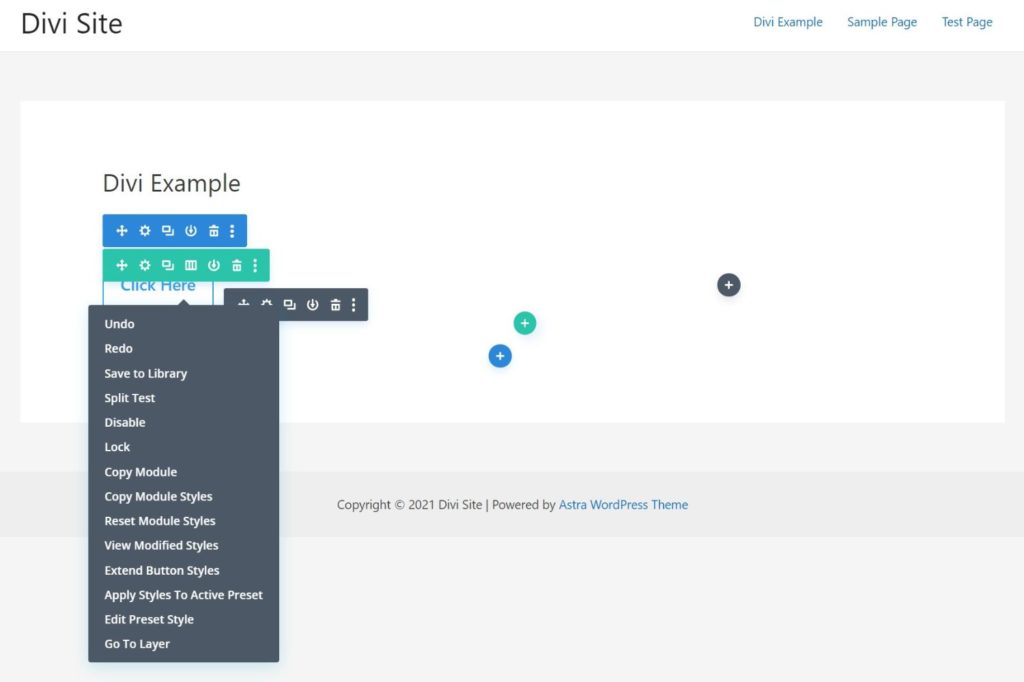
Overall, the Divi interface can sometimes feel a bit overwhelming with all its floating icons. But it does excel at giving you a lot of useful tools and customization options.
It also gives you some interface options that Elementor doesn’t offer, such as the wireframe view.
Elementor UI
Elementor uses a slightly different approach to its interface. It shows you a live preview of your design on the right and a fixed sidebar on the left (much like the native WordPress Theme Customizer).
This sidebar is where you’ll manage the settings for most parts of your design. For example, you can view a list of widgets in the sidebar and drag one over to your design.
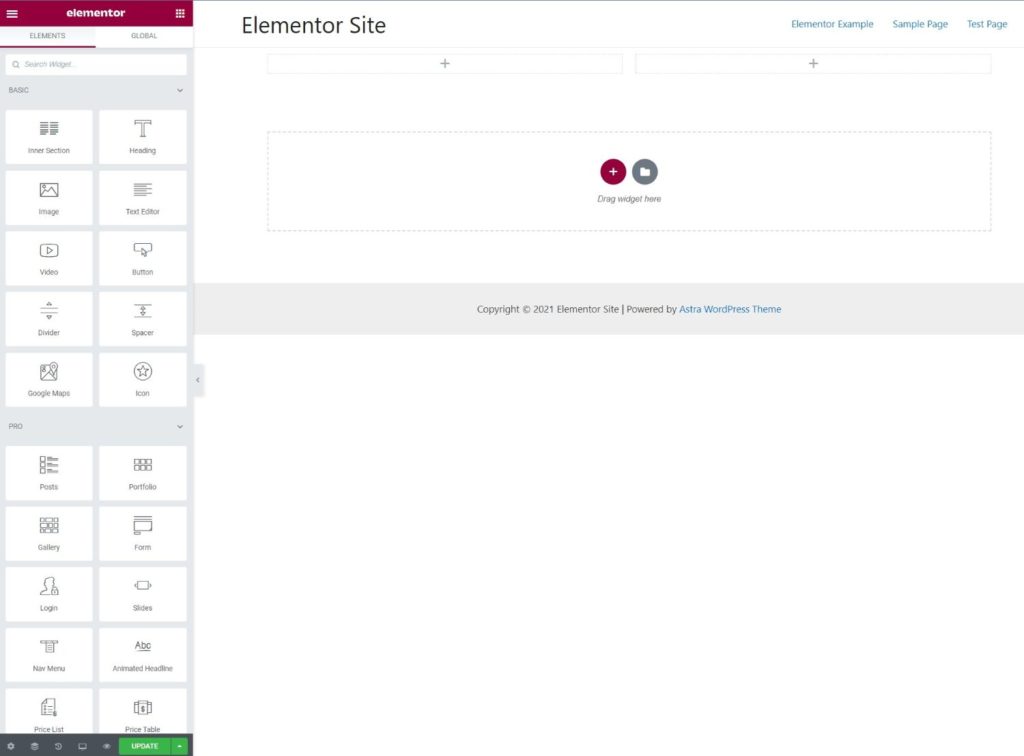
Then, you can customize the widget’s style, content, etc. using its options in the sidebar.
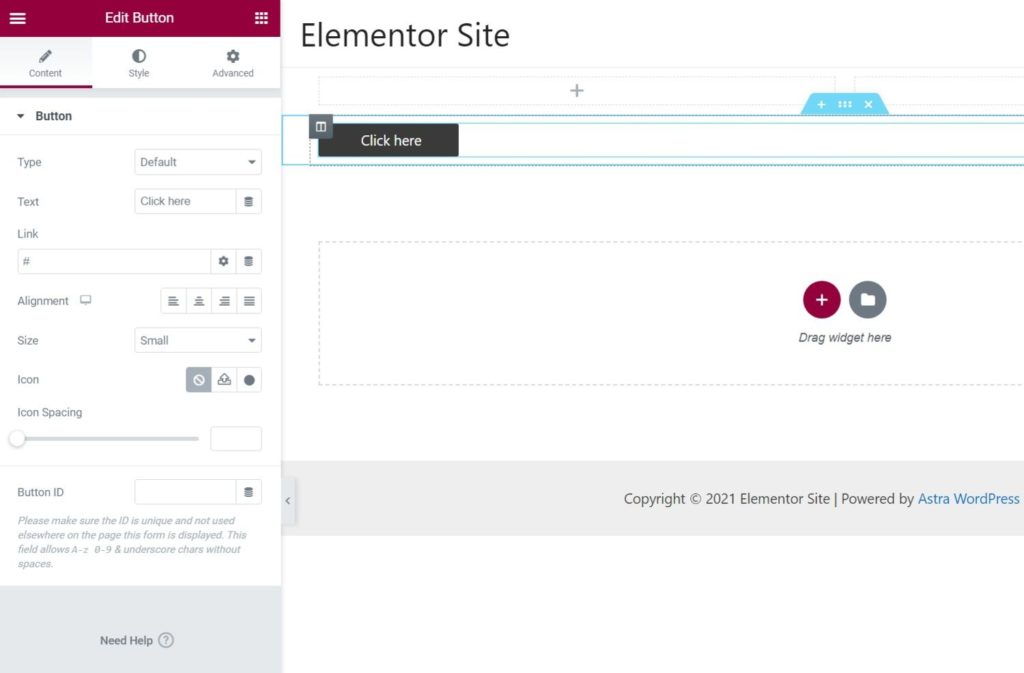
For most text content, you can also use inline editing. Again, that means you can just click and type on the live preview. However, Divi offers slightly more support for inline editing, as there are still some pieces of text in Elementor that don’t support this feature.
Elementor doesn’t give you the wireframe view that Divi offers, but it does come with a really useful Navigator tool. This tool gives you an outline of the structure of your page, much like Divi’s Layers tool. You can also rename elements to help you remember them.
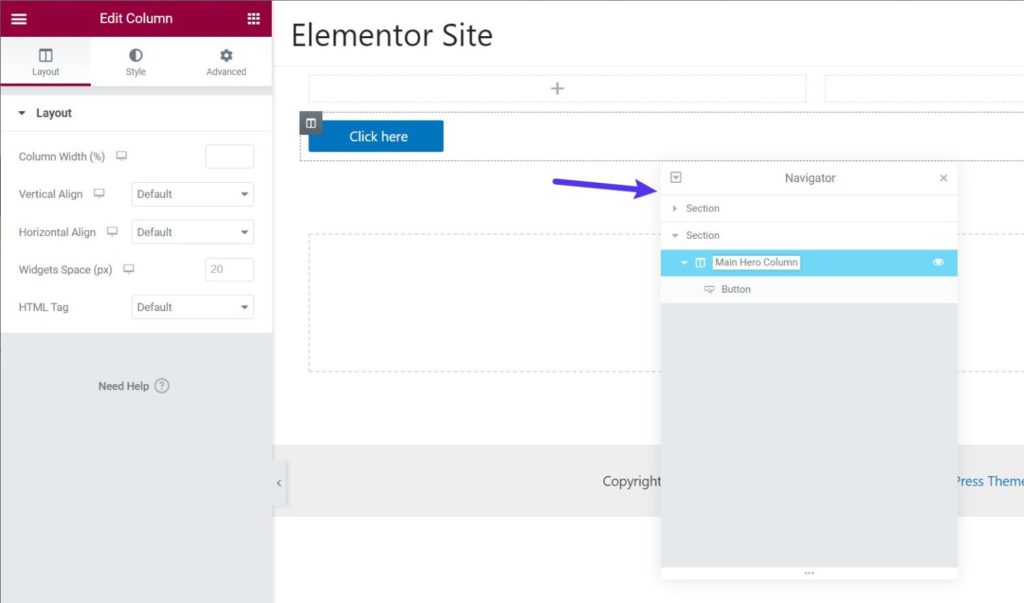
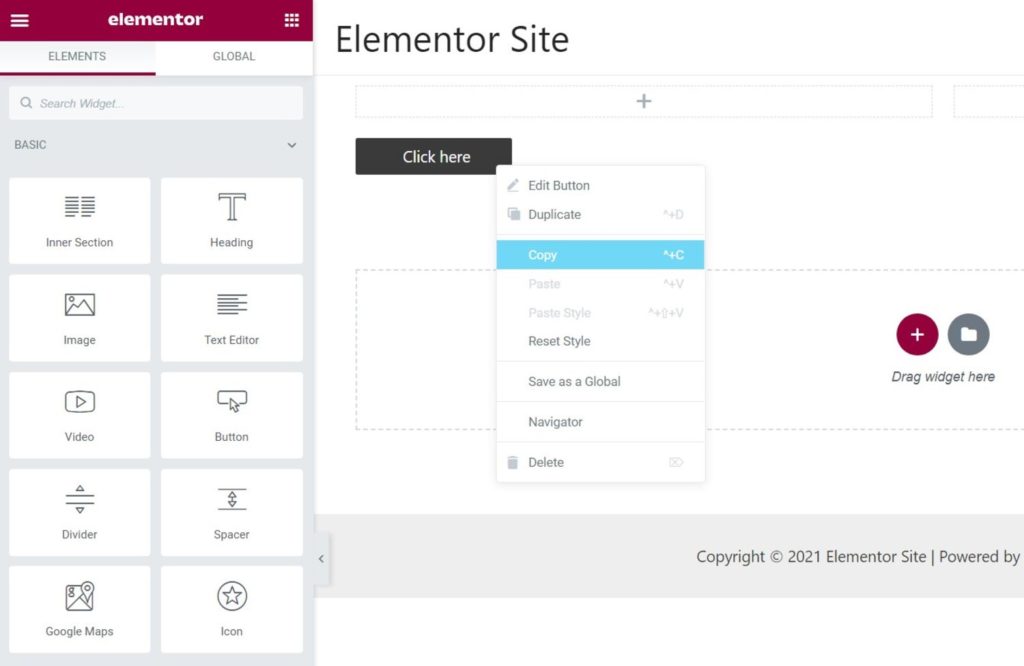
Additionally, you’ll get other useful tools, such as undo/redo, device previews, revision history, etc. And, like Divi, Elementor supports right-click to let you copy widgets and their settings on top of other actions.
Overall, because Elementor doesn’t rely on floating icons as Divi does, the Elementor interface feels a bit cleaner and less overwhelming.
Divi vs Elementor Unique Features
In terms of features, there’s a lot of overlap between these two tools. For example, both tools offer:
- Visual drag-and-drop interfaces
- Full theme-building support
- Support for dynamic data
However, each plugin also has some special tricks up its sleeve. In this section, we’ll compare the features that are unique to each builder.
Divi’s Unique Features
One of Divi’s most unique features is built-in A/B testing, which lets you split-test different modules against one another. For example, you could test how different CTA buttons perform.
This is a very useful tool for marketing, so it’s a big advantage to Divi in more business-focused use cases.
You can add A/B testing to Elementor using the third-party Split Test for Elementor plugin, but it’s not the tight built-in feature that you get with Divi.

There’s also an important difference inside the form module: conditional logic. While both Divi and Elementor Pro offer flexible form widgets, Divi’s form widget includes built-in conditional logic, while Elementor Pro’s doesn’t. If you don’t want to use a third-party form plugin but you want to build advanced forms, this addition is really nice.
Divi also includes its own built-in role editor that lets you control which modules and settings different WordPress user roles can access. If you’re building client sites, you can use this to control which Divi features your clients have access to so they don’t break something. Or, you can use it to control what contributors can do at your site.
Elementor does include a basic role editor to grant or restrict access to the Elementor interface as a whole, but it’s not nearly as granular as Divi’s role editor.
Finally, Divi comes in both a plugin and theme version, while Elementor is exclusively a plugin. Though the Elementor team does offer their own lightweight theme called Hello that’s built to pair with Elementor Pro.
Elementor’s Unique Features
One of Elementor Pro’s most unique features is its Popup Builder. With Popup Builder, you can use the Elementor interface (and all its widgets) to design custom popups that you display anywhere on your site.

You can create different types of popups (modal, notification bar, slide-in, etc.), and also use common popup triggers (time on site, scroll depth, etc.). You’ll also get detailed targeting rules to control when your popups appear.
This is a super flexible feature that you can use for all types of lead generation, from email opt-ins to popup contact forms, promotions, login/register, and lots more.
You can find third-party add-ons that add popup building to Divi, but it’s not a core feature. Your purchase of Divi also includes the Bloom email opt-in plugin, which does include popups. However, Bloom doesn’t give you a drag-and-drop builder, so it’s not a true match for Elementor Popup Builder. Also, Divi’s Bloom is limited to opt-ins, while you can use Elementor to create any type of popup.
Divi vs Elementor Pricing
Comparing pricing is a tricky subject because Elementor is cheaper in some situations, while Divi is cheaper in others. So depending on how you’re going to use each tool, one could be more affordable than the other.
Free Version
Let’s start at the beginning. Elementor is the only one to offer a 100% free version. What’s more, Elementor’s free version is surprisingly flexible. Even with just the free version, you can build some great-looking designs and access the most fundamental widgets.
So, if your goal is to keep things free, Elementor is your only option. And it’s a great one at that!
Premium Versions
In terms of the premium versions, here’s how it shakes out:
- Elementor Pro is cheaper if you only need a builder for a single website.
- Divi is cheaper if you need a builder for multiple websites.
Elementor Pro offers four one-year license options, each for a different number of sites:
- One site: $49/year
- Three sites: $99/year
- 25 sites: $199/year
- 1,000 sites: $399/year (essentially unlimited, but capped to avoid abuse)
Elegant Themes, on the other hand, allows unlimited usage on its plans. For a one-year license, you’ll pay $89 for use on unlimited personal and client websites.
Beyond that, your purchase gets you access to all Elegant Themes products, not just Divi. For that one price, you’ll get access to:
- Divi theme
- Divi Builder plugin
- Extra themes
- Bloom plugin (email opt-ins)
- Monarch plugin (social sharing)
So to recap, let’s look at three different scenarios to see which premium builder would be cheaper. If you need to use a builder on:
- One site: Elementor Pro will be cheapest at $49/year vs Divi’s $89/year.
- Three sites: the two builders are pretty much equal, with Elementor Pro at $99/year and Divi at $89/year.
- Four sites (or more): Divi will be cheapest at $89/year vs Elementor Pro at $199/year.
Lifetime License
Finally, one last important consideration is the license duration. Elementor only offers one-year licenses. That is, you’ll need to renew your license every year if you want to keep receiving support and updates. Additionally, you’ll no longer be able to add new Elementor Pro widgets if you don’t renew. Though all the existing Elementor Pro widgets in your designs will keep working. But you won’t be able to insert new premium templates.
Elegant Themes offers the same yearly license as well as a lifetime license option. With the lifetime license, you pay one flat fee for lifetime use, updates, and support. This is tough to beat from a value perspective.
The lifetime license is $249, which puts the breakeven point at about 2.8 years vs the one-year license.
Divi vs Elementor Templates
One of the big perks of both of these builders is that they come with large template libraries so that you don’t need to start your designs from scratch.
Instead, you just import a template, customize it to meet your needs, and you have a professionally designed website just like that.
They both have quite large template libraries, but Divi has the edge when it comes to the quantity and organization of its templates.
Divi Templates
As of March 2021, Divi comes with over 1,500 pre-built templates that you can import divided into 199 Layout Packs. A Layout Pack is essentially a themed collection of templates all built around a specific website. For example, you might get one template for the homepage, another for the contact page, etc.

You can also save your own designs as templates to reuse them later on.
Elementor Templates
Elementor’s templates come in a lot of different flavors depending on the type of content that you’re building. In terms of designing pages, you’ll get two types of templates:
- Pages: These are full-page templates. You’ll get somewhere around ~200 templates with Elementor Pro.
- Blocks: These are section templates for parts of a page. You can put them together like LEGO to design a full page.
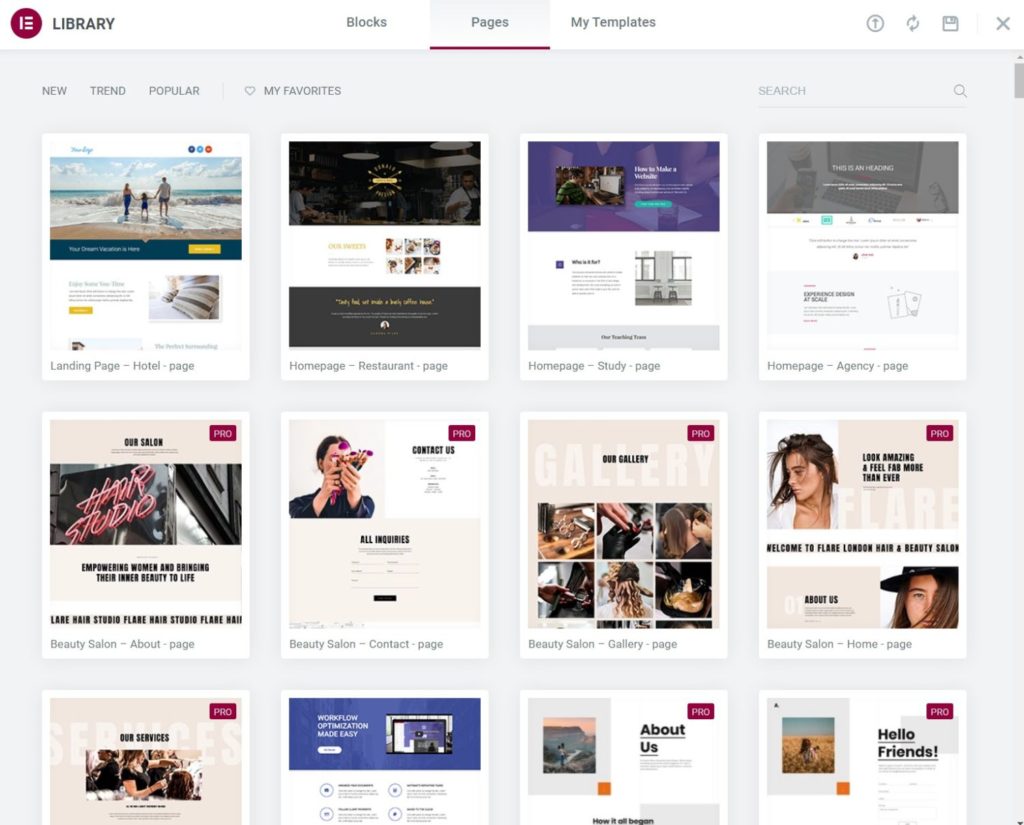
Elementor also organizes some of its templates into template kits, which are templates themed around building a complete website (just like Divi). However, Elementor offers fewer than 25 template kits as of March 2021, though they do release a new template kit every month.
You’ll also get separate templates for popups and theme building, which technically expands Elementor’s list of templates even further.
Finally, you can also save your own templates to reuse them later.
Divi vs Elementor Support
Both Divi and Elementor offer 24/7 support to customers with an active license. Overall, though, the slight edge goes to Divi because it offers more flexible options for getting in touch with support.
Divi Support
All Elegant Themes users with an active license get premium 24/7 support. One of the big perks is that you get live chat support via Intercom (the same support system we use here at Kinsta).
This is a big advantage, as finding live chat support in any WordPress theme or plugin is quite rare.
In addition, you can also still access their older forum support system if preferred. The forum system relies on community support though (the Elegant Teams staff no longer answer questions there). Or, you can help yourself via detailed knowledge base documentation.
Elementor Support
Elementor’s paying customers will get 24/7 premium support via tickets. Also, Elementor maintains a detailed public knowledge base to show you how to use core features, troubleshoot common issues, etc.
Divi vs Elementor: Which One Should You Choose?
In the end, there’s no clear winner, which is why both of these tools are so successful. It really comes down to your budget, which features you value, and which interface you prefer.
Elementor is probably the best place to begin, mainly because it’s free if you’re just getting started. You can see how you like the free version of Elementor and, if it works for you, you’ve got a great tool without spending any money.
If you’re willing to pay, it’s a tougher decision.
First off, consider the interfaces of each tool. Some people prefer one or the other, so that would be one way to choose. You can test each interface by:
- Using Divi Builder’s live web demo
- Installing the free version of Elementor
Both give you top-tier style and design options, so it’s hard to declare one the winner there. Of course, there are small feature differences, but those won’t affect most people.
Second, consider if there are unique features that might push you in one direction or another. For example, if you’re a marketer, you might really value Divi’s built-in A/B testing.
On the other hand, marketers will also value Elementor Popup Builder, a versatile tool for everything from email opt-ins to promotions, surveys, and more.
In terms of performance, Elementor has a slight edge. So if performance is #1 to you, that’s a point in Elementor’s favor.
Of course, if performance is of utmost importance to you, you might want to rethink using a visual builder in the first place, as using the native block stack will almost certainly help you achieve a faster site.
Finally, there’s pricing. For a single site, Elementor Pro is cheaper. But for multiple sites and from a long-term perspective, Divi has two big advantages in terms of value for the money:
- The entry-level $89 Elegant Themes plan still allows use on unlimited sites, while you need the pricier $199 Elementor Pro plan for that. Elementor Pro’s 1,000 sites plan will increase its price to $999 soon.
- Elegant Themes offers a lifetime membership. If you know that you will be using this tool for multiple years, it’s tough to beat a lifetime deal from a value perspective. For Divi, the breakeven point between a one-year license and a lifetime license is about two years and nine months.
However, keep in mind that products and services with lifetime licenses aren’t sustainable. Businesses that offer them have to keep up with the increased costs of support and development. Eventually, they tone down their quality of support, sell the business to someone else, or shut it down. Hence, choose wisely!
Can You Use Elementor With Divi?
Yes, kind of. It is technically possible to use both Elementor and Divi on the same website. However, we would highly recommend against it. Trying to do this will slow down your site (because each builder will load its own scripts), add a lot of complexity, and generally make things more difficult for you.
If you absolutely must use both plugins (again, we really don’t recommend it), you can consider using a plugin such as Asset CleanUp to conditionally load each builder’s scripts only where they’re needed. It should lessen the performance hit when using Divi and Elementor together.
On a related note, though, you can use Divi Builder with Elementor’s Hello theme, which might be a better option than using the Divi theme if you’re planning to use Divi’s new theme builder to design your entire site.
Summary
That wraps up our full Elementor vs Divi comparison. We hope you found it useful!
If these two still don’t suit your requirements, read our list of awesome WordPress page builders. It includes some of the WordPress community’s other favorite page builders, such as GeneratePress with Sections, Beaver Builder, Oxygen, and Brizy.
And if you want to get started with developing WordPress sites right away, have a look at DevKinsta. It’s completely free (even for non-Kinsta customers), and it’ll help you set up a local WordPress site on your computer in no time.
Do you still have any questions about choosing between Divi and Elementor? Ask us in the comments!


